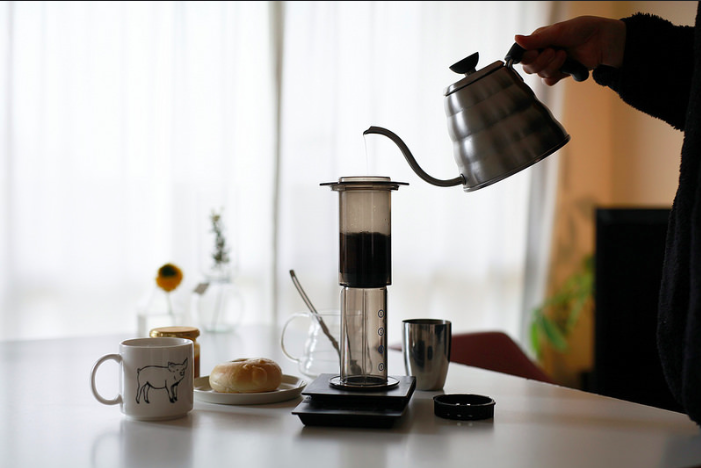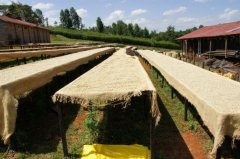Introduction of Coffee Origin-Asian "Laos, Thailand, Myanmar, Nepal"

For professional baristas, please follow the coffee workshop (Wechat official account cafe_style)
As for Laotian coffee produced in Laos, before the emergence of the Taiwanese coffee company "Europeans", Laotian coffee rarely appeared in Taiwan's raw bean trading system.
However, the coffee culture in Laos also began before World War II. In 1927, 90% of the output of the Borofen volcano in Laos was exported to French businessmen and sold to Europe.
Laos itself is a landlocked country in Southeast Asia, and the Borofen volcanic plateau has very precious volcanic soil and geographical conditions nearby.
The French Centre for International Cooperation in Research Agriculture (CIRAD) said in 2002 that Laos coffee beans are one of the best in the world.
Although it is still difficult to see Laos coffee beans from major competitions or evaluations internationally, the quality of Laos coffee is evident.
Thai coffee, mainly planted Robusta species. Thai coffee is not likely to be seen in the boutique coffee category we know so far, but Thailand also has its own Robusta coffee competition.
The coffee tree was introduced into Thailand in 1824, but it was planted in the imperial palace. At that time, ordinary people did not know what coffee was, and it was not clear in historical records what kind of coffee tree was.
In 1904, Robusta was introduced to Thailand for cultivation, and from then on, Thai people officially met with coffee. At that time, the drinking method was to directly soak in hot water to drink, just like drinking tea.
Since then, the yield of Robusta species in Thailand has increased and has become an important supplier of Robusta species in the world. However, sales of coffee beans have always been low, because Thais generally do not like to brew themselves.
It was not until 1988, when Nestl é instant coffee went on sale in Thailand, and then canned coffee was sold one after another, that the number of Thais drinking coffee began to rise (but not self-brewed, but finished coffee).
Popular coffee shops in Thailand are like hand tea shops in Taiwan, although the number is not as dense as in Taiwan.
However, Starbucks is also less popular in Thailand, mainly because expensive and light tastes are not popular.
However, Thais like to use condensed milk to drink coffee, instead of the risk of sugar and cream on coffee and other pastries.
The main reason is that it can make the diet sweet and strong.
Until recent years, Thailand has held a Robusta species competition, which is similar to the nature of the American COE extraordinary Cup, and selects Robusta coffee.
In addition, Thailand is also the original country of the publication of coffee Trapi magazine.
A good magazine is worth recommending
Burma began to grow coffee beans in 1885, but there has been no export or obvious commercial trace for nearly a hundred years.
In the middle and late 20th century, the United Nations Drug abuse Control Program (UNDCP) began to promote coffee cultivation in order to encourage Burmese farmers to give up opium poppy cultivation.
However, during this period, because of the huge profits of the original drugs and the substantial control of the junta, although many farmers joined the program to earn subsidies for growing coffee, they were actually still growing opium poppies.
Nevertheless, as of a few years ago, Myanmar had 100,000 acres of coffee fields, more than half of which were near Southern Shan State and Wacheng.
Regardless of Myanmar's current coffee processing technology, large areas of natural shade forests and low-pollution natural environment, give Myanmar the potential to achieve quality coffee.
Burmese agricultural officials also plan to send agricultural experts around the world to search for suitable varieties and retrieve plants and seeds.
Myanmar can find many well-known bean varieties, H528, Catual, SL34, S795, Blue Mountain and the best quality S795, which are enough to compete with common traditional varieties.
Nepal, it is said that more than two thousand years ago, Nepal's Kathmandu Valley was a big lake with a giant lotus flower on the lake.
Manjushri Bodhisattva from Wutai Mountain in China wanted the lotus flower to be more gorgeous, so he split a hole with the back of the mountain on the edge of Hunan and let the lake water drain from then on, thus forming today's Kathmandu Valley.
In 1938, a yogi brought coffee seeds into Nepal from Burma.
In 1976, Nepal introduced Arabica species from India, which started the development of Nepalese coffee industry.
Coffee is rare in Nepal, and there are only a few Taiwanese trading companies that own beans. Nepal from other sporadic or different sources can only be encountered by players or forums.
Nepal faces India to the south and is sandwiched with the Himalayas between China and India. As far as coffee cultivation is concerned, there is a unique and excellent environment.
Eight of the world's top ten peaks are located in Nepal, which can be divided into five climatic zones according to Nepal's steep border.
Because the country is a landlocked country sandwiched between the two great powers, it needs to be highly dependent on its economy, but it needs to be pursued under the relationship of economic imbalance.
Nepalese export goods are easily diluted by the abundant resources of both sides, which may make it difficult for Nepalese coffee to be exported.
Nepal can use the snow water of the Himalayas to irrigate and wash and ferment, from the altitude environment from the source of water, etc., all give Nepal very excellent conditions.
At present, the quality of Nepalese coffee is almost in line with expectations. However, the current stable output is only available to Japan, the United States and Europe.
Important Notice :
前街咖啡 FrontStreet Coffee has moved to new addredd:
FrontStreet Coffee Address: 315,Donghua East Road,GuangZhou
Tel:020 38364473
- Prev

Guava Plain Manor in New Oriental region of Guatemala washed with SL28 varieties of Fine Coffee beans
For the exchange of professional baristas, please follow the coffee workshop (Wechat official account cafe_style) Guatemala New Oriente Plan del Guayabo SL28 Washed guava plain manor in Guatemala New Oriental region washed SL28 flavor description: maltose and roasted dried almonds, with orange, orange, lime fruit flavor when sipping, almonds and almonds in the back.
- Next

Introduction of Coffee Origin-Asian "Sri Lanka, Bali, Yunnan, China"
For professional baristas, please follow the coffee workshop (Wechat official account cafe_style) Sri Lanka, formerly known as Ceylon. Sri Lankan black tea and Ceylon black tea refer to the same thing. In 1658, the Dutch grew coffee in Ceylon (present-day Sri Lanka), but the coffee was sufficient for economic development until the 19th century. At this time, Britain occupied Ceylon and launched a variety of cash crops.
Related
- Detailed explanation of Jadeite planting Land in Panamanian Jadeite Manor introduction to the grading system of Jadeite competitive bidding, Red bid, Green bid and Rose Summer
- Story of Coffee planting in Brenka region of Costa Rica Stonehenge Manor anaerobic heavy honey treatment of flavor mouth
- What's on the barrel of Blue Mountain Coffee beans?
- Can American coffee also pull flowers? How to use hot American style to pull out a good-looking pattern?
- Can you make a cold extract with coffee beans? What is the right proportion for cold-extracted coffee formula?
- Indonesian PWN Gold Mandrine Coffee Origin Features Flavor How to Chong? Mandolin coffee is American.
- A brief introduction to the flavor characteristics of Brazilian yellow bourbon coffee beans
- What is the effect of different water quality on the flavor of cold-extracted coffee? What kind of water is best for brewing coffee?
- Why do you think of Rose Summer whenever you mention Panamanian coffee?
- Introduction to the characteristics of authentic blue mountain coffee bean producing areas? What is the CIB Coffee Authority in Jamaica?

